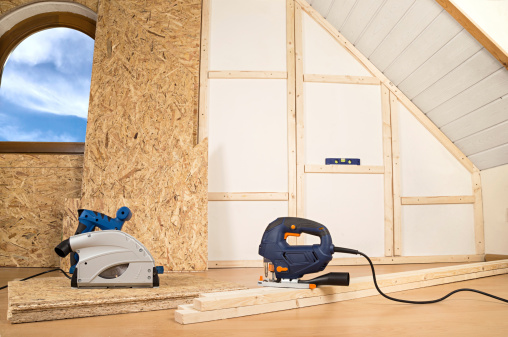It's been said that painting a wall is like frosting a cake. They both begin in a bare state and “all” you have to do is cover them evenly.
As you may have noticed, some frosted cakes look a lot better than others, showing the unmistakable touch of someone who knows how to expertly maneuver a spatula. And as you may have noticed, some painted walls look a lot better than others, showing the unmistakable touch of someone who knows how (and when) to use brushes and rollers.
While the two applications are similar, it's easy to underestimate what's involved in painting a wall evenly and expertly. Let Experts In Your Home guide you through the process. By the time you're done, you might consider their advice the icing on the cake.
Never Skip Home Painting Prep Work
Begin by prepping your wall following the steps in a previous Experts In Your Home article, “Interior Home Painting: Prep Tips to Get the Look You Dream Of.” While the wall dries, double-check that you have enough paint to cover the wall with two coats to ensure even coverage.
One gallon usually covers about 400 square feet. For a room, calculate square feet by multiplying the length times the width. Do the same for the ceiling, if you're painting that, too. And don't forget the trim: multiply the length, in feet, by .5 for the width.
If you're using more than one gallon of paint, mix the gallons together in a 5-gallon bucket and stir them together to ensure color uniformity.
Cut In First
- Pour some paint in a small container; it will easier to handle as you move up and down a ladder .
- Use a 2- to 3-inch trim brush to "cut in," which means to apply a strip of paint along the perimeter, where the wall and ceiling meet.
- Cut in one small section at a time. Alternate using the brush to cut in and the roller to paint the ceiling to prevent creating a harsh line. (A partner comes in handy here; one person can handle the brush while the other works the roller.)
Tackle the Ceiling
- Dip a roller into the paint and remove excess on the edge of paint tray or roller grid.
- Start at a corner, near the “cut-in line” you just created.
- Paint across the width of the ceiling – not the length – to avoid neck and back strain.
Move to the “Main Event”
- Wait for the ceiling to dry before using a trim brush to cut in along the “crease” line between the wall and ceiling. (If you don't have a steady hand, many home improvement stores sell gadgets to help with this task.)
- Use a trim brush to create a swath of paint that extends out at least 3 inches from doors, windows, moldings and trim. This step will allow you to paint the wall with relative ease.
- With a roller, work in manageable, 3-foot sections, from the top of the wall to the bottom.
- Load the roller with paint and form a “W” on the wall. Then fill it in without lifting the roller from the wall.
- Turn the roller sideways to get as close as you can to the ceiling and baseboard.
- Don't press the roller against the wall to “squeeze” more paint out of it. Simply reload the roller with paint.
- Cover paint buckets or cans as well as brushes and rollers with aluminum foil if you need to take a break.
Paint the Trim
- Wait for the wall to dry completely before applying painter's tape along the edge of the baseboard and other trim. Press it down with your finger or a spoon.
- Paint the trim with a brush.
- Remove the tape shortly after you're finished painting instead of waiting for the paint to dry. This should prevent peeling.
As you much as you might enjoy painting, you probably will agree that while it's similar to frosting a cake, it's hardly a piece of cake. Home painting – and careful home painting -- requires time, patience and finesse. If you get overwhelmed, remember that the “wing men” at Experts In Your Home have run many “rescue missions” – and we're happy to do the same for you.








